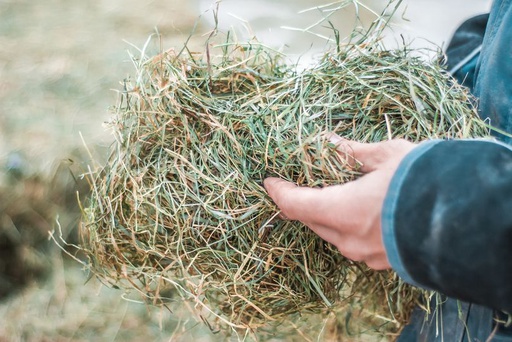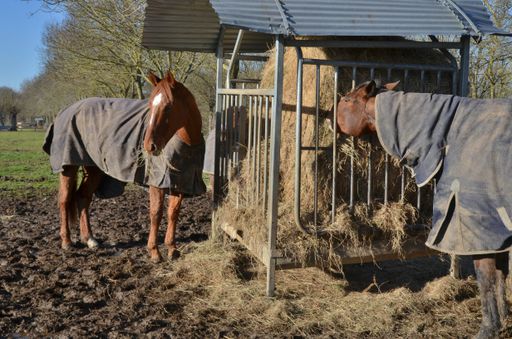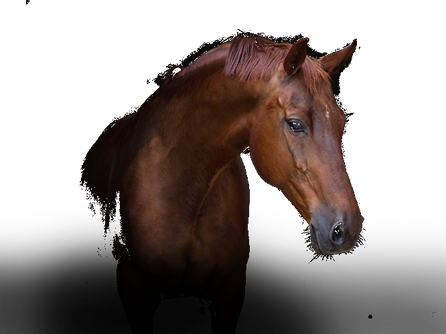Hygienic quality of forage
Regardless of whether you choose hay, haylage, or silage for your horse, the most important thing is to select forage with good hygienic quality. To assess the hygienic quality, you look for the presence of mold fungi, yeast fungi, and bacteria. The first assessment is made using our senses—sight, smell, and touch.
Sight
The forage should look fresh. We should not see mold spots, white dots, or discolored areas in the bale. We should also not see dust when handling the feed. By using sight, we can also detect foreign objects in the feed, such as plastic, cans, paper, dirt, or manure
Smell
The forage should smell pleasant. A smell of ammonia, butyric acid, or a musty odor is a sign of reduced hygienic quality or that an improper fermentation has occurred in the bale.

Känseln
Feel the forage—can you clearly feel the structure of the stems, or do the stems separate easily? If the forage feels warm, slimy, or slippery, or if the bale generates heat after being opened, it is a sign of reduced hygienic quality.
If you're unsure whether your forage maintains acceptable hygienic quality, you can send a feed sample to an analysis lab that performs hygiene tests. This is the safest way to assess the hygienic standard of the forage.
How do you ensure the hygienic quality of feed?
For haylage and silage, it is important that the plastic around the bale is tightly sealed. An important aspect of this is that there are enough layers of plastic on the bale. The drier the forage, the more plastic layers are needed, as the dry, coarser stems are more likely to perforate the plastic. Studies have shown that drier haylage is more susceptible to mold than wetter haylage, as it is more difficult to pack the dry material tightly enough to ensure an oxygen-free environment.
When the bale is opened and comes into contact with oxygen, the growth of unwanted bacteria begins. Therefore, it is important to use the bale as soon as possible after opening. This also applies if the bale breaks during handling.

One advantage of wrapped bales is that they can be stored outdoors, eliminating the need for large storage spaces for forage. However, issues with pests can arise when storing outdoors, such as birds pecking holes in the plastic. A tip to prevent damage to the plastic from birds is to place a net or a tarpaulin over the bales.
Storing hay requires high standards for the building in which the feed is kept. Hay is dry (high DM content) and quickly absorbs moisture from the surroundings, meaning it must be stored in a dry place where there is no risk of condensation or water leakage. Hay should be stored on pallets to create an air gap between the floor and the hay. If you have questionable storage buildings, you can store straw around the hay to absorb any moisture from the surroundings.
Feed consumption
When purchasing your forage, it is important to know approximately how much you will need. By calculating your feed consumption for the year, you can buy everything from the same supplier and hopefully from the same batch. This way, you reduce the risk of sudden feed changes and, consequently, also reduce the risk of colic.
If you choose to use haylage, it is a good idea to calculate an average time for how long a bale will stay open in the stable. The time will depend on feed consumption, the bale's weight, DM content, and nutritional value. If you expect it will take five days or fewer to use up a haylage bale, that's ideal. If it takes longer to finish the bale, you should consider using hay or a smaller haylage bale. How long a haylage bale remains usable after opening varies depending on the original quality of the bale, DM content, temperature, and how the opened bale is stored. As a general rule, it is best to finish an opened bale as quickly as possible to ensure its hygienic quality.



